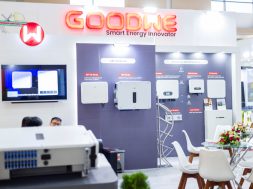
Banks and investors commit additional funds to renewables
A group of eight banks and investors pledged $7bn last week, joining Bank of America’s initiative that plans to raise at least $10bn for investments in clean energy and sustainable development.
HSBC Holdings, Credit Agricole, AllianceBernstein Holding, Babson Capital Management and Mirova, a unit of Natixis, are among those to join the Catalytic Finance Initiative, according to a joint statement issued by the banks last week. Bank of America created the initiative in 2014 to stimulate at least $10bn of new investment in clean energy projects through improving financing structures that could reduce the risk of investing in low-carbon infrastructure. This announcement takes the total raised to $8bn, according to a spokesman for HSBC. The European Investment Bank and IFC, a unit of the World Bank, have also joined the project, the statement said.
Separately, the World Bank, in a broad plan aimed at accelerating its efforts to combat climate change, vowed to ramp up by 50% its funding of clean energy projects by 2020. The “World Bank Group Climate Change Action Plan” calls for increasing from $2.3bn to $3.5bn its direct funding of clean energy projects over the next five years. It pledged to use a variety of financial instruments to “de-risk” renewable energy investments to double the gigawatts of renewable energy generation associated with its projects, with an eye toward producing a total of 20GW of renewable energy over five years.
Concerns about funnelling money into clean energy through the yieldco model are rising with the troubles of debt-laden SunEdison. TerraForm Global, a yieldco founded and controlled by SunEdison, announced completion of the acquisition of the 26.4MW Alto Cielo solar farm in Uruguay last week. The acquisition comes as TerraForm Global seeks to avoid being affected by potential insolvency proceedings at its parent.
Yieldcos charmed investors in early 2015 with dividend growth and handsome stock gains, but the pace was unsustainable. The slower moving, more traditional utility and institutional investors are once again making a comeback in the wind acquisition market in the US, with access to low cost debt, at around 2-4%. A Research Note from Bloomberg New Energy Finance, The tortoise and the hare: yieldcos lag, utilities take lead, explains the trends, and looks at successful yieldco models.
Over in Europe, Nordex completed the acquisition of the manufacturing assets of Acciona Wind Power for about EUR 785m ($894m. The marriage creates the fifth-biggest turbine maker worldwide. Tying the knot with Acciona marks “recognition that you need a certain scale to compete in the global market,” Lars Bondo Krogsgaard, the group’s chief executive officer, told Bloomberg News in a phone interview. “It’s a strategic reaction to a slowing down of growth in Europe where we are strong.”
Power utilities in Europe and elsewhere are also facing challenges to their traditional business models, as low power prices eat into profits, and renewables penetration increases. This is particularly topical in Germany, and Bloomberg New Energy Finance has analysed the business models of the big four utilities in that country: E.ON, RWE, Vattenfall and EnBW. As of 2015, the big four owned only 1% of renewable installed capacity in the country, but are fairly active in downstream activities such as electric vehicle charging infrastructure.
In offshore wind, Vattenfall, the largest utility in the Nordic region, said it expects its offshore wind farms to reach the industry price goal of EUR 100 ($114) a MWh ahead of schedule. “I’m confident that we will meet the industry target by 2020, but we see some potential to outperform prior with projects that are in the process of getting an investment decision shortly. Cost reduction is our core focus,” said Gunnar Groebler, the head of the wind energy unit.
Tesla Model 3 orders meanwhile surged to 325,000 as customers lined up for the car, which will only begin shipping in late 2017. The Model 3 has a base price of $35,000 in the US before a federal tax credit or state incentives. Musk said on Twitter over the weekend that the average sale price, with options, probably will be closer to $42,000.
There seemed to be some support coming through for Yingli Green – the financially stressed solar panel maker from China. The China Banking Regulatory Commission, the supervising agency for the country’s banking industry, has asked China Development Bank to ensure CNY 7.5bn ($1.16bn) in loans are provided to the unprofitable solar-panel maker as it looks to pay off old debts and restructure, said a person familiar with the matter.
Spain’s Abengoa won a reprieve last week when a judge approved the company’s application for more time to win investor support for a EUR 9.4bn ($10.7bn) debt restructuring plan. The ruling puts a hold on all repayments until 28 October while the Spanish renewable energy company seeks a debt deal. The firm won backing for a standstill from more than 75% of lenders last month and the judge’s decision makes that binding on all lenders, Abengoa said in a regulatory filing.
In the UK, Good Energy Group said it would dispute a ruling that suggested it is not the country’s greenest energy supplier—a label that can help it win customers. The UK’s advertising standards watchdog ruled last week that Good Energy’s rival, Ecotricity Group, has the “greenest” energy in Britain. The Advertising Standards Authority said Ecotricity’s fuel mix produced less carbon pollution than Good Energy’s, the only other British supplier that uses 100% renewable sources for electricity.











